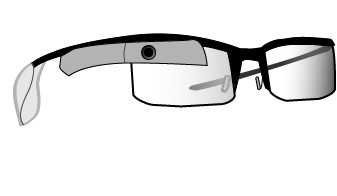Wearable tech: The way of the future, or future shock?

Graphic credit: Connor Moffitt
February 22, 2015
Do the names “Google Glass,” “Apple Watch,” and “Oculus Rift” mean anything to you?
If their creators are correct, names like these mark the next wave in technology: electronics that you can wear.
However, some people–myself included–might think that wearable technology still has a way to go before they’re willing to make a purchase.
Google Glass was Google’s first foray in the world of wearable tech, and it was a bit of a strange one. According to Wired, Google Glass was a head-mounted unit, with a small screen that went over one of the user’s eyes, to allow the user to view information, superimposed over the real world.
I say “was” because, earlier this month, Google decided to stop production of the much-maligned Glass. The New York Times claims that there were various issues in the production of Glass that led to its demise, but I think that ultimately, people just aren’t ready for a computer that goes on their face yet.
In April of this year, Apple will be debuting their own wearable tech that is less revolutionary than Google Glass, but I worry it just isn’t revolutionary enough.
According to CNET, Apple will be releasing their Apple Watch, the latest addition to the smartwatch market. The Apple Watch will basically serve as a companion piece to the user’s iPhone, allowing for the quick sending of text messages and other phone-based activities. In addition to this, it will also feature fitness technologies to track the user’s progress through fitness activities, and a new method of making credit card payments called Apple Pay.
It may seem hypocritical of me since I was just complaining that Google Glass is too revolutionary, but Apple Watch just doesn’t seem like it does enough for me to warrant its $349 price. Without the fitness features and Apple Pay, it is basically nothing more than a more inconvenient way of using one’s smartphone. Buyers will be shelling out a large chunk of money for the “privilege” of doing what they already do on their iPhone on a tiny screen on their wrist.
The only wearable technology that you could convince me to purchase is the Oculus Rift. According to Wired, the Oculus Rift is, much like Google Glass, a head-mounted unit. The main exception, though, is that the Oculus Rift doesn’t superimpose images over the real world.
Instead, it displays two images into the user’s eyes, so as to create a three dimensional image. These images can then be manipulated with the use of controllers, either with traditional video game controllers or motion sensitive ones. Instead of augmenting reality like Google Glass, Oculus Rift submerges the user in a virtual reality.
The applications of technology like this are incredibly exciting. Besides the obvious uses in entertainment media like gaming and movies, it’s conceivable that the Oculus Rift could be used in a variety of other fields, such as engineering and medicine, where it can be used to manipulate complicated models and make them easier to visualize for the user.
I think the reason that the Oculus Rift is more exciting than Google Glass and the Apple Watch is that it’s in the Goldilocks zone: it’s just the right amount of progressive. It does something that no product on the market does, unlike the Apple Watch, but does so in a way that doesn’t seem too futuristic, like Google Glass often did.
If more wearable technologies would adapt the model of “do something new but don’t try to emulate Star Trek,” maybe I’d be more inclined to hop on board the trend.
Until then, though, I’m perfectly happy with my old-fashioned laptop and smartphone.




